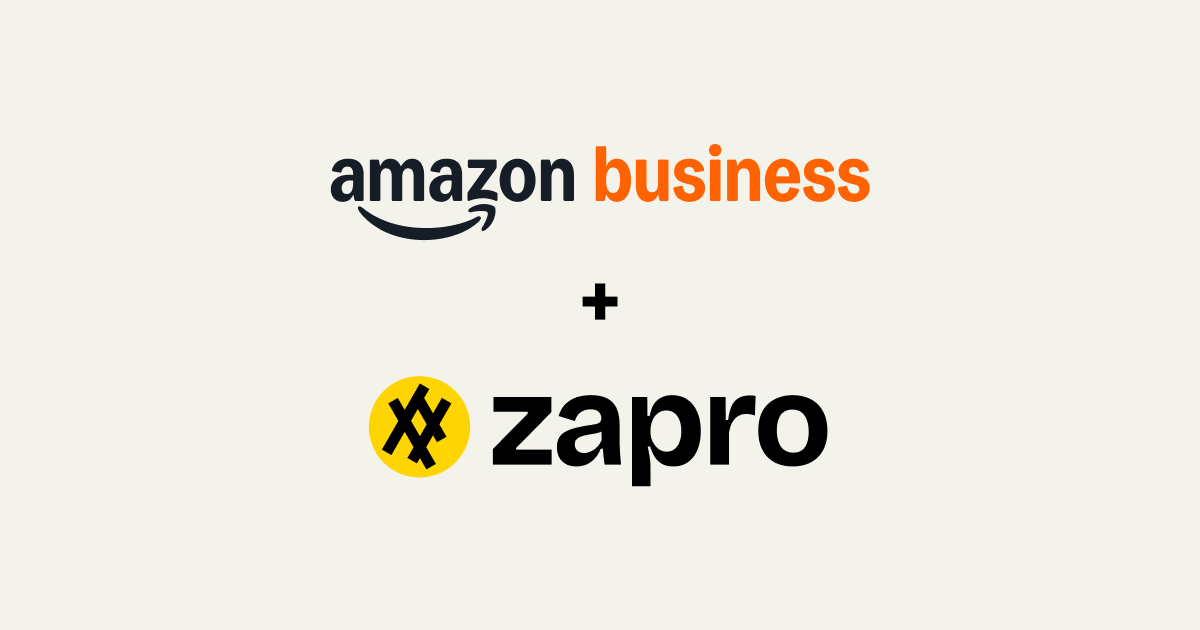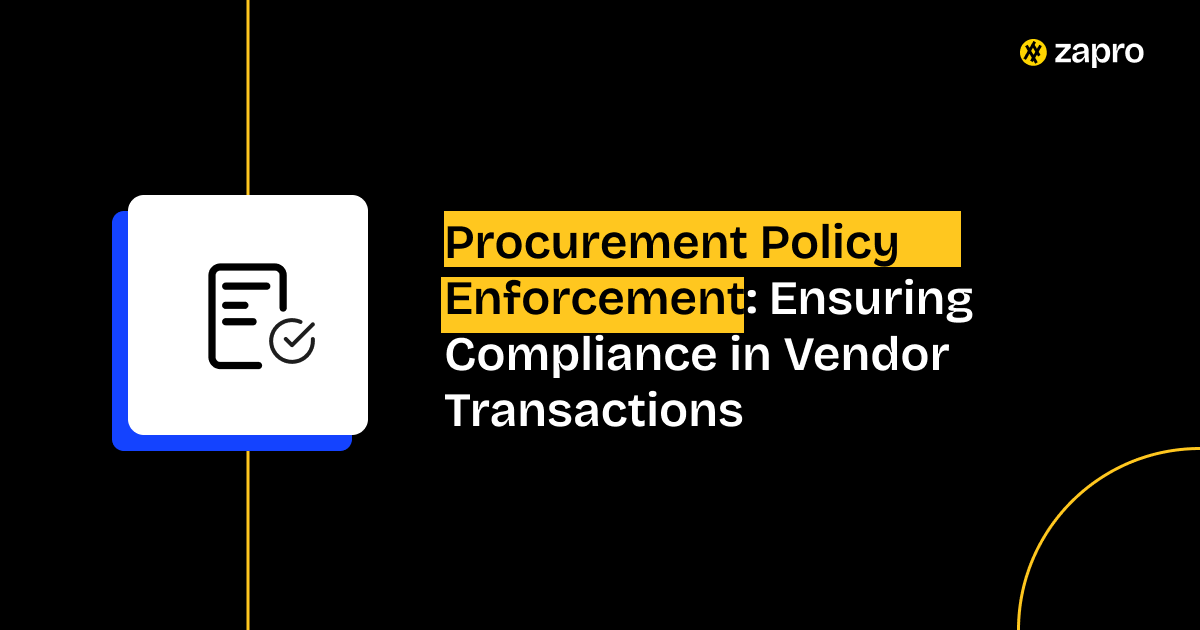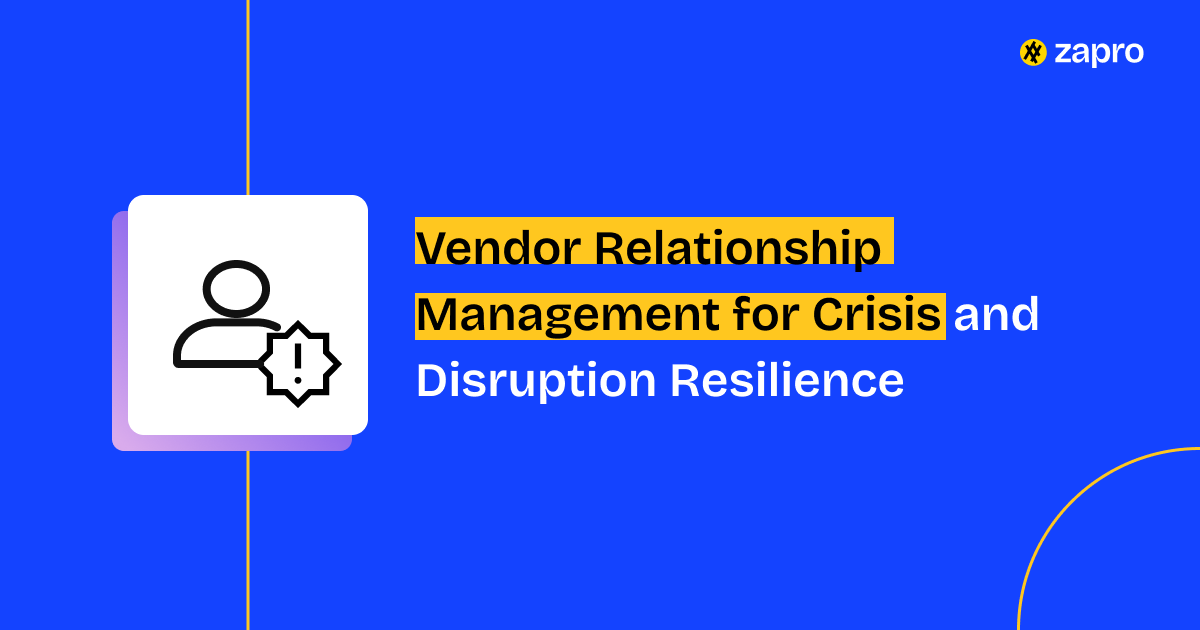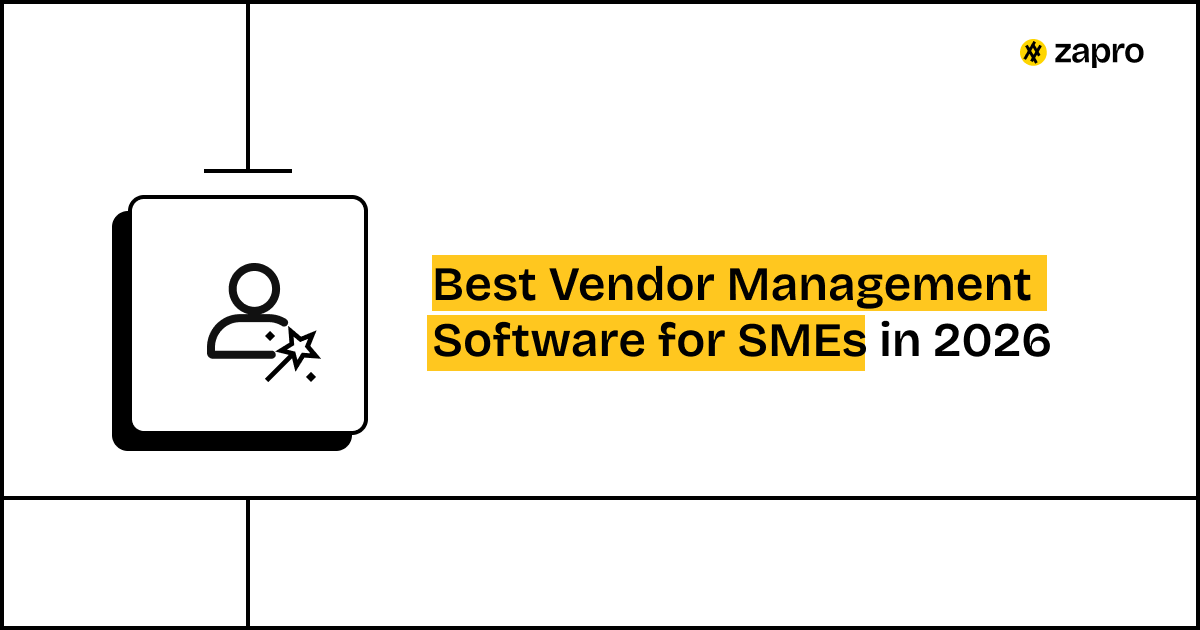The imperative of procurement policy enforcement
Organizations need procurement policies to establish rules which maintain financial accountability in their spending activities. The actual difficulty emerges when organizations need to enforce their policies throughout all teams and geographic areas.
The absence of enforcement allows contracts to be disregarded while rogue purchasing activities increase and organizations lose control of expenses. The prolonged absence of proper enforcement results in unnecessary expenses and regulatory violations and deteriorating relationships with suppliers.
Every business transaction needs policy enforcement to maintain alignment with organizational targets and ethical standards and regulatory requirements. The digital transformation of procurement operations requires strict enforcement to maintain spending efficiency and transparency and regulatory compliance.
Why policies matter: Risk, Cost, and Reputation
Organizations need procurement policies to protect themselves from financial and operational breakdowns. The policies determine how organizations use their funds while making sure all financial activities serve organizational objectives. The policies protect three essential business components.
- Risk: Organizations become vulnerable to fraud and delivery problems and compliance violations when they lack proper vendor verification and approval systems. The implementation of enforced policies reduces risks through thorough evaluation and responsible accountability practices.
- Cost: The use of approved vendor contracts through policy compliance helps organizations stop budget leaks and overpayments which results in better profitability and improved cash flow forecasting.
- Reputation: The enforcement of policies helps organizations maintain ethical sourcing practices and transparent operations which leads to better supplier trust. The enforcement of policies helps organizations maintain sustainability and fairness standards which protect their brand reputation.
Strong procurement governance emerges from these core elements which link compliance to performance instead of creating bureaucratic obstacles.
The dangers of maverick spending and non-compliance
The practice of maverick spending together with non-compliance activities create dangerous financial consequences for organizations.
Maverick spending which occurs through unauthorized channels continues to secretly consume organizational resources. The practice of making occasional exceptions for convenience purposes results in higher expenses and deteriorating supplier relationships and reduced negotiation power.
The implementation of procurement policy enforcement serves as a strategic approach instead of being a mere administrative task. The following section will introduce essential elements which support successful procurement policy enforcement for achieving consistent compliance.
Learn about vendor management.

By 2027, 50% of organizations will support supplier contract negotiations through the use of Artificial Intelligence (AI)-enabled contract risk analysis and editing tools.
Key pillars of effective procurement policy
A procurement policy which works as an effective system establishes rules that maintain organizational control while providing flexible purchasing options. The essential elements of this framework enable organizations to establish standardized purchasing procedures which maintain transparency and follow all applicable regulations.
1. Spend thresholds and approval hierarchies
The establishment of specific spending limits enables organizations to grant purchasing authority based on employee responsibility levels. The establishment of purchase limits based on role and department and product category helps organizations maintain budget control and prevent unauthorized financial commitments.
The system enables fast decision-making through its structured hierarchy which maintains complete accountability for all transactions.
The combination of automated systems with properly designed hierarchies enables faster workflow processing which reduces delays while maintaining proper compliance standards.
2. Preferred vendor lists and contract adherence
The selection of approved vendors serves as the core mechanism for managing expenses and maintaining purchasing stability. The company uses these lists to select suppliers who fulfill all requirements for price and quality and regulatory compliance.
The practice of following negotiated contracts helps organizations protect their advantageous terms while reducing the possibility of duplicate expenses and supplier duplication. The system enables efficient procurement management which delivers reliable deliveries and develops strong relationships with suppliers.
Organizations that purchase from their preferred suppliers can use their combined purchasing power to secure improved deals and evaluate supplier performance more accurately.
3. Ethical sourcing and sustainability guidelines
The current procurement environment requires organizations to move past cost considerations because it now represents their corporate values. The implementation of ethical sourcing and sustainability standards within procurement policies requires suppliers to maintain fair labor practices and environmental responsibility and governance compliance.
The implementation of these guidelines enables organizations to defend their brand image while fulfilling worldwide ESG standards and modern slavery regulations. The framework enables organizations to link their procurement choices with their sustainability targets for the long term.
A procurement framework which enforces ethical sourcing principles creates stakeholder and customer trust because it demonstrates that procurement choices can generate profits while upholding ethical standards.
Leveraging technology for automated policy enforcement
The expansion of digital procurement operations together with increasing complexity makes it impossible to enforce policies through manual methods. Technology solves this problem by integrating compliance functions into operational workflows which enforce policies through active implementation. The automation of procurement governance transforms traditional police work into a system which prevents problems from occurring.
The following section explains how technology enables organizations to enforce policies through automated systems which operate in real-time.
1. Configurable workflow rules and triggers
Organizations can use automation tools to create workflow rules which convert their procurement policies into operational instructions. The Procure to Pay Process includes multiple stages which workflow rules determine the actions for each stage starting from requisition approval through to invoice clearance.
The system will activate additional approval steps or stop transactions when it detects purchases that exceed established spending limits or involve vendors who are not part of the preferred vendor list.
The system provides automatic control which prevents human mistakes while maintaining proper purchase procedures for all transactions.
2. Real-time alerts and notifications for policy violations
The implementation of technology provides organizations with immediate access to monitor their policy compliance status. The system generates instant alerts to detect any procurement irregularities which include maverick purchases and duplicate invoices and non-contractual spending so procurement teams can stop problems from worsening.
The system generates alerts which help users avoid policy violations while simultaneously promoting better behavioral practices. Users who receive immediate feedback about their policy violations will adopt proper procedures for their future work.
Procurement leaders can maintain operational control through customizable notification systems which prevent them from needing to monitor every detail for better system performance and enhanced accountability.
3. Seamless integration with purchase order and invoice systems
The success of policy enforcement depends on how well data moves between systems. The connection between compliance tools and E-procurement Software and Procurement Tools and financial systems enables automatic validation of all transactions against current rules and contracts and vendor databases.
The system removes departmental barriers which creates a unified system for approval management and vendor data and spending records. The system streamlines operations by removing the need for manual data verification and speeding up invoice processing times.
The system integrates policy enforcement into operational workflows so it functions as an essential part of regular business activities.
4. Audit trails and reporting for compliance monitoring
The system tracks all procurement activities through complete audit trails which include time-sensitive timestamps starting from requisition until payment completion. The recorded data serves as essential evidence during auditing procedures and dispute settlements and compliance assessment processes because it provides complete visibility and tracking capabilities.
The system generates detailed reports which help procurement leaders track policy compliance levels and identify recurring violations and department-specific compliance patterns. The obtained data enables procurement leaders to develop better policies and eliminate weaknesses while enhancing their governance systems.
The right technology transforms policy enforcement into an automated system which maintains continuous compliance and strategic alignment through self-regulating operations.
The Smartest Way to Ensure Vendor Compliance is Here.

Strategies for successful policy implementation and adoption
The success of a well-designed procurement policy depends on employee understanding and acceptance of its rules. The implementation of rules requires organizations to transform them into operational practices which staff members will follow naturally.
Three strategies exist to support successful policy adoption and sustained compliance.
1. Clear communication and training
All personnel who handle purchasing activities need to understand the policies and their business value and operational significance.
The combination of scheduled training sessions with internal FAQs and visual guides helps employees understand complicated rules better. Employees who understand procurement policies as operational tools for better spending decisions will follow them more closely.
Your Procurement Software should display policy reminders and approval thresholds directly through its purchase request interface to enhance communication effectiveness.
2. Regular policy reviews and updates
The fast-paced nature of procurement environments requires organizations to adapt their policies because new regulations appear and suppliers transform and business objectives change. A policy which remains unchanged will eventually lose its effectiveness.
The review process of procurement policies should occur every six months to maintain their effectiveness and maintain their relevance. The review process should evaluate current procedures while detecting recurring non-compliance issues and incorporate user and stakeholder feedback.
Organizations that maintain flexible policies maintain operational alignment with operational requirements and evolving compliance requirements.
3. Fostering a culture of compliance
The success of compliance initiatives depends on organizational culture rather than enforcement methods. The practice of compliance becomes successful when staff members view it as their professional duty instead of dealing with administrative tasks.
Leadership teams must actively demonstrate their commitment to procurement protocols through their actions. The organization will adopt procurement protocols when leaders demonstrate their commitment to following them. Teams will maintain their focus on best practices when their organization provides recognition and rewards for compliance.
Organizations that establish compliance as their core value will transform their procurement department into a business performance driver that builds trust with stakeholders.
Measuring the impact of strong procurement governance
The evaluation of policy effectiveness requires organizations to track specific performance indicators after policy implementation. The following performance indicators serve as essential metrics for evaluation.
• The percentage of transactions that follow established rules represents the policy adherence rate.
• The reduction of unauthorized purchases that occur outside policy boundaries represents the Maverick spend reduction.
• The requisition-to-approval process now operates at higher speeds because of automation implementation.
• Better contract management and reduced errors enable organizations to achieve financial savings.
• The number of audit findings and compliance violations decreases when organizations improve their audit performance.
Organizations can evaluate their procurement governance strength and policy enforcement tool effectiveness by monitoring these specific performance indicators.
Organizations that want to achieve strategic procurement operations with transparency and efficiency should focus on governance that goes beyond violation prevention.
The following section demonstrates how the Zapro.ai platform enables automated policy enforcement through real-time tracking and smart analytics to create a seamless procurement compliance process.
How Zapro.ai ensures effortless procurement policy enforcement
Zapro.ai provides organizations with an automated system to enforce procurement policies without any effort required.
The implementation of separate tools and human monitoring face problems with non-compliance and delayed approval processes and unapproved expenses. Consistent procurement policy enforcement between different departments and locations proves to be a challenging task. Organizations that use multiple systems face data fragmentation and limited oversight. Zapro.ai operates as a distinct solution which stands apart from other systems.
Zapro.ai operates as an automated intelligence-based system which converts manual procurement governance into an automated process. The system provides exceptional value through its following features.
1. Customizable approval systems
The system allows organizations to create customizable approval systems which follow their specific spending limits and product categories and geographical areas. The system implements automatic approval procedures for all transactions without requiring human intervention or exceptions.
2. Real-time policy validation
The system enforces procurement policies through real-time automated validation of requisitions and purchase orders and invoices against organizational rules and preferred vendors and contract requirements.
3. Instant alerts for policy violations
The system generates immediate alerts whenever any transaction fails to meet policy requirements or exceeds budget limits or uses unauthorized vendors for purchases.
4. Complete visibility and audit tracking
The system enables users to access complete transaction visibility through its real-time dashboards and audit trails. The system enables users to track policy compliance levels and detect rule-breaking activities while identifying performance enhancement opportunities through its single dashboard interface.
5. Seamless integration across systems
The system allows users to connect their Procurement Software with their ERP systems and finance tools through seamless integration which provides complete Procure to Pay Process visibility.
6. AI-driven analytics for optimization
The system uses AI-based analytics to optimize procurement operations while simultaneously enhancing vendor relationships and identifying spending optimization opportunities.
Zapro.ai distinguishes itself from other procurement tools because it uses a complete automated system to manage procurement operations. The system enables organizations to establish policies which it then enforces through continuous measurement and improvement processes.
If your goal is to build a compliant, transparent, and high-performing procurement function, Zapro.ai is the partner that turns policy enforcement into a competitive advantage.

Stop chasing vendors. Start enforcing policies automatically.
Join 1000+ businesses using Zapro for effortless compliance.
Don’t miss our weekly updates
We’ll email you 1-3 times per week—and never share your information.

 Healthcare
Healthcare Financial Services
Financial Services Technology
Technology Venture Capitalist
Venture Capitalist Chief Procurement Officer
Chief Procurement Officer Chief Financial Officer
Chief Financial Officer




